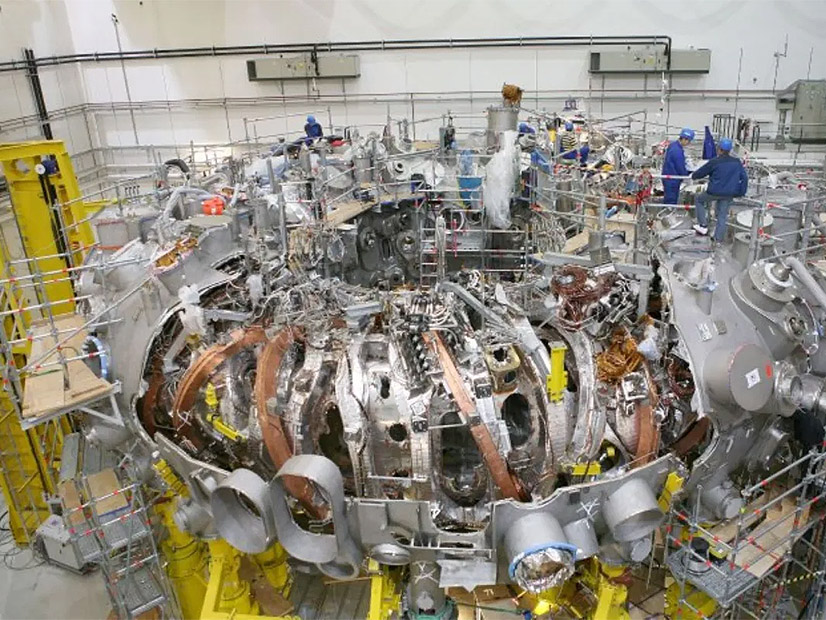
About 45 companies worldwide are in the race to develop commercially viable nuclear fusion technology, and according to a new report from the Fusion Industry Association (FIA), almost half of them say they expect to deliver power to the grid somewhere between 2031 and 2035.
While existing reactors produce energy by breaking atoms apart, fusion promises even larger amounts of energy by superheating and fusing hydrogen or other light elements. But the technology is still years away from any kind of commercial scale.
However, the FIA report, released July 17, presents a confident image of a “maturing industry” that attracted $900 million in new private investment in the past year and grew public investment from $271 million to $426 million. An extensive list of investors includes both Microsoft founder Bill Gates and his Breakthrough Energy Ventures, Chevron Technology Ventures, Mitsubishi UFJ Capital and the German Federal Agency for Disruptive Innovation.
“In the face of continued challenges in raising capital for deep technology ventures, the additional funding underscores confidence in fusion technology’s potential to revolutionize the global energy landscape on a timescale that is relevant to investors,” FIA CEO Andrew Holland said in the report’s introduction.
He also pointed to public-private partnerships as a key driver for fusion development. In the U.S., the Department of Energy’s Milestone-based Fusion Development Program last year awarded a total of $46 million to eight companies to continue research and development of fusion technologies, while the governments of Germany, Japan and the U.K. also have launched public-private partnerships to develop fusion, the report says.
Jobs are another plus. Holland noted that the industry’s workforce now totals more than 4,100 people ― almost four times its 2021 headcount. Close to 75% of current employees are either engineers or scientists, but only 26% are women.
Holland explained those lopsided demographics in terms of “the intensive research and development efforts required to advance fusion technology,” which is also reflected in the report’s fragmented findings on the current state of research and development in the field.
About half the companies the FIA surveyed are pursuing some form of “magnetic confinement” ― in which magnets are used to manipulate the atoms, which are in the form of plasma ― but using different approaches. Stellarators (eight companies) and tokamaks (three companies) are both types of reactors that use magnetic confinement to produce fusion.
The other major branch of fusion research centers around “inertial confinement,” in which atoms are heated and compressed to trigger fusion. Two companies are pursuing a hybrid technology called magnetized target fusion, which combines both magnetized and inertial confinement.
Others are researching a range of technical variants: shock-driven inertial confinement, pulsed magneto-plasma pressurized confinement and short pulse laser-driven inertial confinement. In total, the report lists 24 different technological approaches.
Commercialization will likely require the development of standards and some consolidation around a few core technologies.
Getting to Break-even
Interest in fusion and small modular reactors is on the rise in the U.S. and worldwide as both carbon-intensive industries ― cement, steel and chemicals ― and power-hungry data centers look for new sources of clean, dispatchable power to help them reduce their greenhouse gas emissions.
The U.S. appears to be leading the world in fusion development, with 25 fusion companies now spread across the country, according to the FIA report. In June, DOE released its 2024 Fusion Energy Strategy, which focuses on closing technology gaps needed to build a pilot fusion plant and then laying out a path to commercial deployment, leveraging public-private partnerships.
Cited by 25 companies in the FIA report, the top gap that needs closing is fusion efficiency ― called “energy gain” ― which is the ratio of the power produced by a fusion reaction to the power needed to maintain the reaction in a steady state so it continues to produce energy. For commercial viability, the power produced by fusion has to significantly exceed the power needed to maintain the reaction.
In December 2022, the Lawrence Livermore National Laboratory was the first U.S. facility to pass that break-even point of a fusion reaction producing more power than was needed to maintain it.



